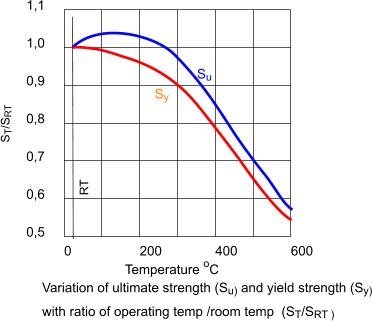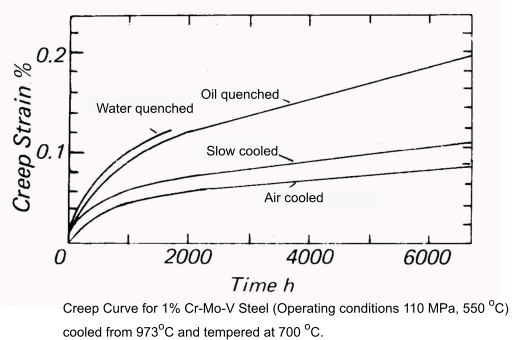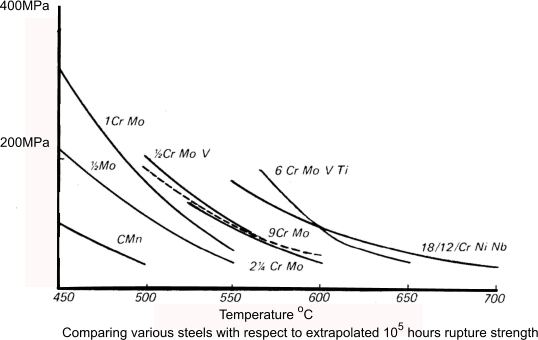| |
Iron-steel Page Temperature Effects on Metal Strength
|
Introduction The notes below are intended to provide general guidance to the affect of high and low
operating temperatures on the strength of metals. They should only be used for initial
appraisal of the suitability of metals for operating conditions away from ambient. For detailed assessment
the material suppliers must be consulted. Table showing the strength of certain metals as a % of their strength at 20 oC as the operating temperature is increased.
List of Metals used at high temperatures
Steels-Elevated Temperatures The graph below shows the relationship between The ultimate and yield strengths of various l grades of carbon and alloy steel with the ratio of operating temperature to room temperature
All metals �creep� under stress at high temperature and in their manufactured form, components may deform. In fact for high temperature applications creep is generally the important criteria in the selection of metals
Looking at the graph above the air cooled steel results in the finest grain structure and the best creep strength. The slow cooled steel had about 20% ferrite in the structure. The quenched steels results in course precipitates in the grain structure. The effect of alloying on the long term creep resistance of steels is shown in the figure below.
Steels-Low Temperatures At temperatures below -10oC typical steels become more brittle and the toughness is affected. Using selected grades of carbon steel it is possible to operate at temperatures down to -40oC . At these low temperatures it is necessary to conduct specific impact tests at low temperatures on the selected steel to confirm suitability. Austentic stainless steels are generally suitable for applications down to, and below, -40oC Austenitic Stainless steel is particulary useful in cryogenic applications beacause of its high toughness and strength at very low temperatures 304 (X10CrNi18-8 ) stainless steel can be readily employed to handle liquid helium and liquid hydrogen (-268,9 and -252.7 oC respectively). 9% nickel alloy steels retain good notch ductility down to -196 oC and have been used for manufacture of vessels holding liquid oxygen and liquid methane(-182,9 and -161,5 oC respectively). Non-ferrous metals - Low TemperaturesAluminum alloys are used for structural parts for operation at temperatures as low as ( -270oC ). Below zero, most aluminum alloys show little change in properties, the yield and tensile strengths may increase, elongation may decrease slightly and impact strength remains approximately constant. Consequently, aluminum is useful material for many low-temperature applications. Copper and copper alloys are widely used for refrigeration components operating at temperatures down to -40oC. Notes to be added |
||||||||||||||||||||||||||||||||||||||||||||||||||
| Relevant Links |
|
Iron-steel Page


